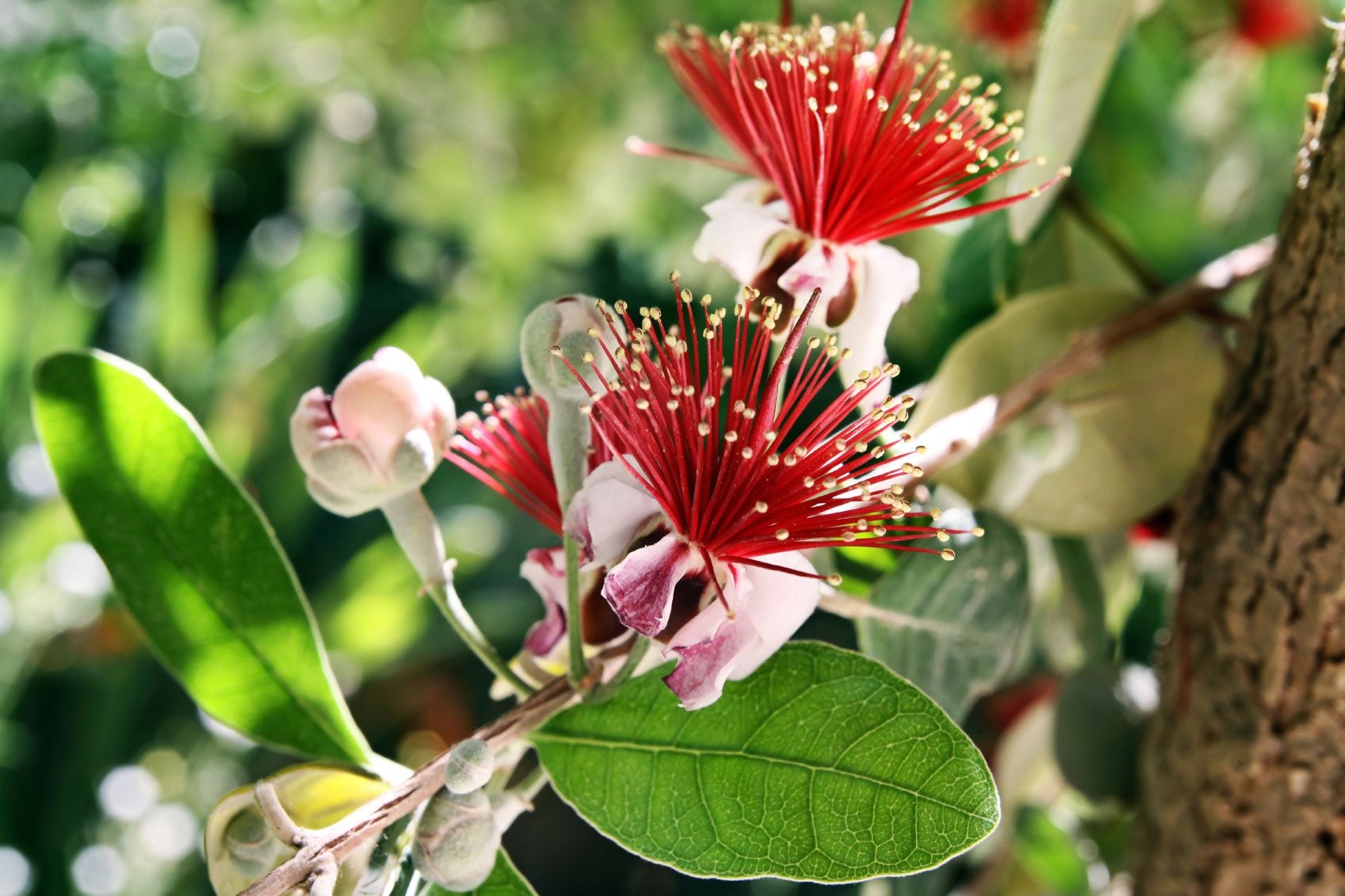Feijoa Pineapple Guava Info: Tips On Growing Feijoa Fruit Trees


One of the easiest fruits to grow, pineapple guava gets its name from the flavor of the fragrant fruit. Pineapple guava is ideal for small spaces because it's a small tree that doesn't need a second tree for pollination. Find out more about growing pineapple guava in this article.
What is a Feijoa Tree?
Pineapple guava (Feijoa sellowiana) is an attractive, evergreen tree or shrub with many landscape uses. It's ideal for warm, western climates and well suited to home gardens. The plant grows 12 to 15 feet (4-5 m.) tall and wide. The edible flowers bloom in May, followed in late summer or fall by sweet, fragrant, reddish fruit that drops to the ground when ripe. Feijoa fruit trees and shrubs look best when you prune them lightly. Clipping them into a formal shrub destroys their natural shape and reduces the fruit yield. It's best to remove side branches that are less than 1 foot (31 cm.) off the ground. If you want to grow the plant as a tree rather than a shrub, remove the lower branches up to one-third of the tree's height over a period of several years.
Feijoa Growing Conditions
Gardeners in warm, western climates will love growing pineapple guava for its delightful fragrance, attractive flowers, and tasty fruit. The tree is very easy to care for and requires very little pruning. Although it is considered hardy in U.S. Department of Agriculture plant hardiness zones 8 through 11, it can't tolerate the high humidity of the southeast. It withstands winter temperatures as low as 12 degrees F. (-11 C.). In fact, the fruit tastes better when the tree is exposed to some freezing temperatures. Feijoa pineapple guava performs well in full sun or partial shade. It prefers rich, organic, well-drained soil with an acid or slightly alkaline pH. When the pH is too high, the leaves turn yellow. Newly planted and young trees need weekly watering in the absence of rain. As the tree matures, its drought tolerance increases. Pineapple guava needs light fertilization every other month in most soils. Use about half the recommended amount of 8-8-8 fertilizer for the size of the tree. Scratch it into the surface of the soil and water deeply to distribute the fertilizer. You'll find plenty of uses for pineapple guava. It makes a dense informal hedge or screen that needs very little pruning. Use it as a container or specimen plant on patios and other places where you can enjoy the intense fragrance of the fruit. The plant provides cover for wildlife, and the flowers attract hummingbirds. Space the shrubs 5 feet (1.5 m.) apart for a barrier hedge and 3 feet (1 m.) apart for a foundation planting.
Gardening tips, videos, info and more delivered right to your inbox!
Sign up for the Gardening Know How newsletter today and receive a free copy of our e-book "How to Grow Delicious Tomatoes".

Jackie Carroll has written over 500 articles for Gardening Know How on a wide range of topics.
-
 4 Superfast Composting Methods: Turn Waste Into Garden Gold In 30 Days Or Less
4 Superfast Composting Methods: Turn Waste Into Garden Gold In 30 Days Or LessTry the fastest composting methods to turbocharge your pile and transform kitchen scraps and garden waste into finished compost in just a few weeks.
By Mary Ellen Ellis
-
 Best Spider Plant Soil – Complete Soil Guide And Expert Tips For Keeping Plants Happy
Best Spider Plant Soil – Complete Soil Guide And Expert Tips For Keeping Plants HappySpider plants are fun and easy plants to grow, but what is the best soil for a spider plant? Selecting the right soil is important so they can thrive.
By Bonnie L. Grant